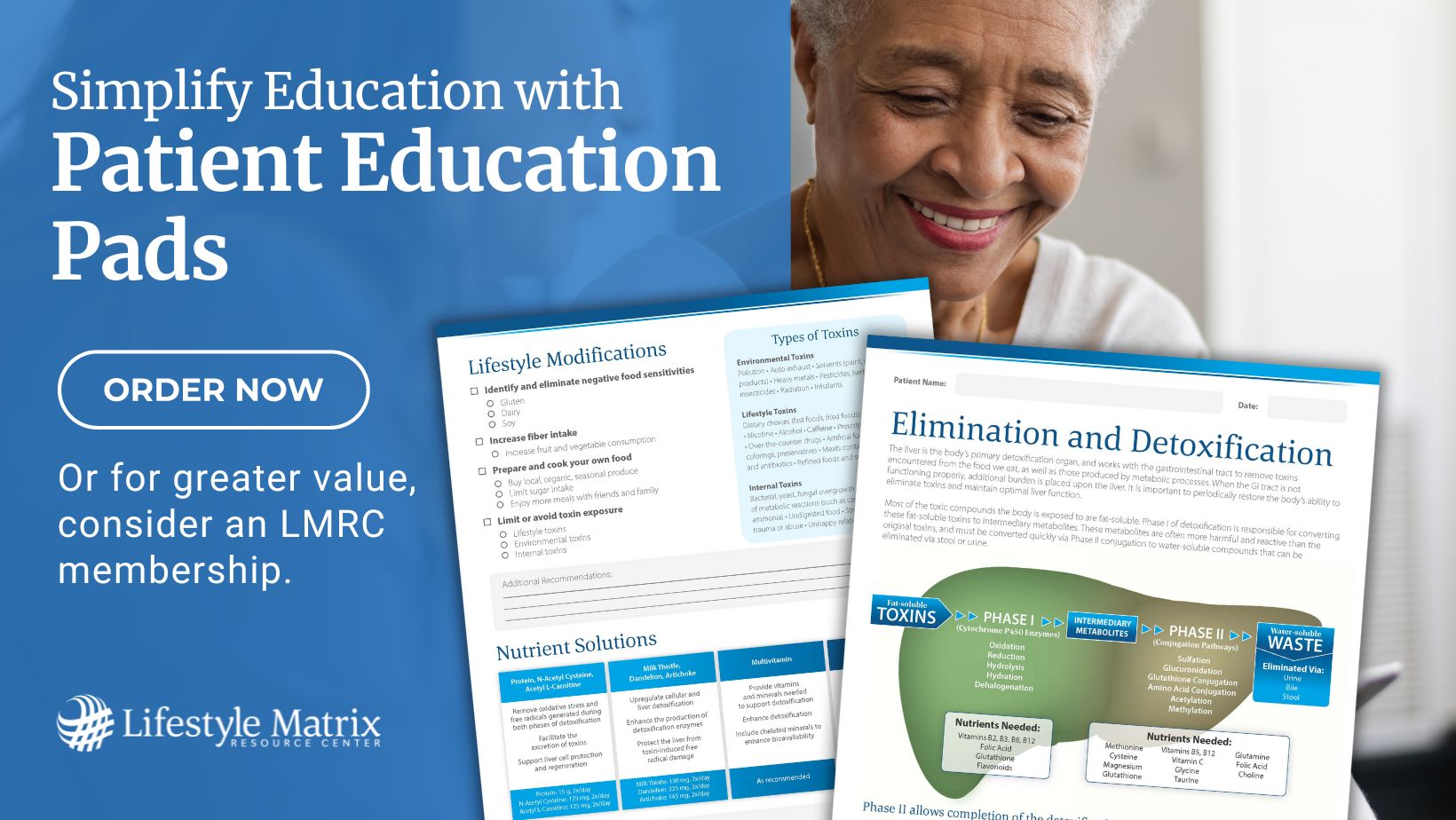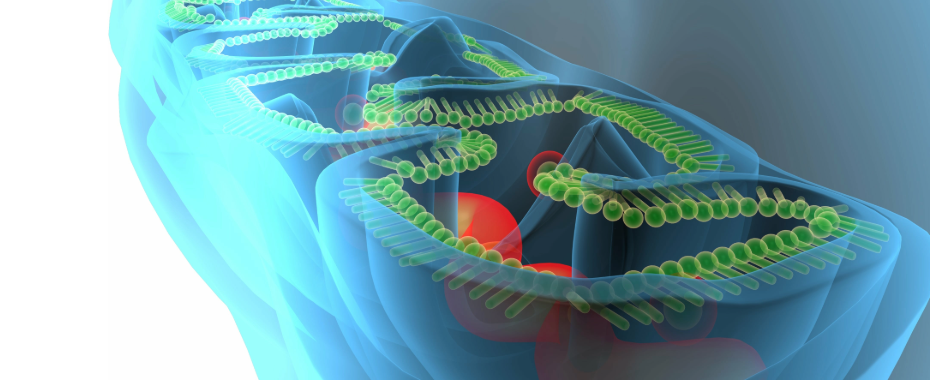Biotransformation—commonly referred to as detoxification—is an active process within the human body essential for clearing both exogenous and endogenous toxins and maintaining optimal health. It involves the conversion of fat-soluble toxins into more water-soluble forms, facilitating their safe excretion. This process operates silently in the background, tirelessly working around the clock to ensure our elimination pathways work optimally.
The Three-Step Process of Active Biotransformation
Active biotransformation is a three-step process. Phases I and II occur in the liver, while Phase III occurs within the digestive system and kidneys. While these three phases are crucial for efficiently eliminating toxins and maintaining overall health, it's important to recognize that they also generate high levels of free radicals as a byproduct, requiring specific nutritional support for neutralization.1 If the free radicals are not properly neutralized, mitochondrial structure and function can quickly become impaired.2,3
Mitochondria and Active Biotransformation
When considering the high energy demands required for active biotransformation, mitochondria undoubtedly take center stage. These subcellular organelles act as the body's powerhouses, generating the ATP necessary for daily function. While organs such as the heart and brain are commonly associated with high mitochondrial density and energy requirements, it's crucial not to overlook the substantial mitochondrial density and energy demands of the liver and kidneys.
Both the liver and kidneys are metabolically active organs abundant in mitochondria. The liver, which utilizes roughly 18% of the body's daily energy expenditure, heavily relies on mitochondria for oxidative metabolism and normal function.4 Additionally, each liver cell (hepatocyte) contains an astounding 1,000 to 2,000 mitochondria, which collectively occupy about one-fifth of the hepatocyte volume!5 The kidneys use approximately 10% of the body's total daily energy expenditure, relying on mitochondrial function for nutrient reabsorption and metabolic activities, including filtering waste.4
The Gut and Active Biotransformation
In functional medicine, gastrointestinal health is recognized as foundational, and the same is true when talking about active biotransformation. Phase III of active biotransformation involves the removal of toxins through the stool. Research indicates that gastrointestinal dysbiosis can contribute to constipation,6 obstructing toxin removal, thus hindering the body’s biotransformation process.
The standard American diet, characterized by its high sugar and caffeine content and low nutrient density and fiber, significantly compromises gastrointestinal health. Shockingly, 95% of Americans lack adequate levels of at least one micronutrient,7 and an alarming 95% also fail to consume sufficient fiber!8 These statistics highlight the need to prioritize gastrointestinal health in every biotransformation protocol.
The Active Biotransformation Conundrum
An interesting paradox occurs in the active biotransformation process: Biotransformation requires ATP to clear toxins effectively, yet toxins diminish mitochondria's ATP production capacity.9
Each year, the number of toxins introduced into our environment through food, water and other sources continues to rise. This ongoing rise in toxic exposure raises concerns about the impact it may have on our patients’ health, especially their mitochondrial function. With this understanding, it is easy to see the connection between toxic load, mitochondrial dysfunction and chronic disease in many of our patients. Fatigue, mental fog, hormone disruption or unexplained weight gain can be a sign that their bodies are struggling to keep up.

The Bottom Line
It is important that our patients feel empowered in their health journeys. We can support our patients’ biotransformation efficiency by prioritizing their mitochondrial health through nutrition and lifestyle choices. Prescribing your patients a biotransformation protocol that addresses the energy demands of active biotransformation, which are critical and sadly often overlooked, while promoting gastrointestinal health is a necessary first step toward better health for them.
For a list of foods and professional-grade nutraceuticals that support biotransformation and mitochondrial health, please see the blog post How to Enhance Biotransformation with an Elimination Diet.

Ryan VanBommel, DC is the Pillars of GI Health Brand Manager at Lifestyle Matrix Resource Center and a board-certified chiropractor in the state of Illinois. He obtained his doctorate in chiropractic from National University of Health Sciences in Lombard, Illinois. Passionate about functional medicine, he consistently strives to identify and tackle the root causes of health issues. Currently, Dr. VanBommel is pursuing his IFMCP certification from The Institute for Functional Medicine.
References
1. Lobo V, Patil A, Phatak A, Chandra N. Free radicals, antioxidants and functional foods: Impact on human health. Pharmacogn Rev. 2010 Jul;4(8):118-26. doi: 10.4103/0973-7847.70902. PMID: 22228951; PMCID: PMC3249911.
2. Gutierrez J, Ballinger SW, Darley-Usmar VM, Landar A. Free radicals, mitochondria, and oxidized lipids: the emerging role in signal transduction in vascular cells. Circ Res. 2006 Oct 27;99(9):924-32. doi: 10.1161/01.RES.0000248212.86638.e9. PMID: 17068300.
3. Guo C, Sun L, Chen X, Zhang D. Oxidative stress, mitochondrial damage and neurodegenerative diseases. Neural Regen Res. 2013 Jul 25;8(21):2003-14. doi: 10.3969/j.issn.1673-5374.2013.21.009. PMID: 25206509; PMCID: PMC4145906.
4. Shirley MK, Arthurs OJ, Seunarine KK, Cole TJ, Eaton S, Williams JE, Clark CA, Wells JCK. Metabolic rate of major organs and tissues in young adult South Asian women. Eur J Clin Nutr. 2019 Aug;73(8):1164-1171. doi: 10.1038/s41430-018-0362-0. Epub 2018 Nov 7. PMID: 30405209; PMCID: PMC6373842.
5. Alberts B, Johnson A, Lewis J, et al. Molecular Biology of the Cell. 4th edition. New York: Garland Science; 2002. The Mitochondrion. Available from: https://www.ncbi.nlm.nih.gov/books/NBK26894/
6. Ohkusa T, Koido S, Nishikawa Y, Sato N. Gut Microbiota and Chronic Constipation: A Review and Update. Front Med (Lausanne). 2019 Feb 12;6:19. doi: 10.3389/fmed.2019.00019. PMID: 30809523; PMCID: PMC6379309.
7. Reider CA, Chung RY, Devarshi PP, Grant RW, Hazels Mitmesser S. Inadequacy of Immune Health Nutrients: Intakes in US Adults, the 2005-2016 NHANES. Nutrients. 2020 Jun 10;12(6):1735. doi: 10.3390/nu12061735. PMID: 32531972; PMCID: PMC7352522.
8. Quagliani D, Felt-Gunderson P. Closing America's Fiber Intake Gap: Communication Strategies From a Food and Fiber Summit. Am J Lifestyle Med. 2016 Jul 7;11(1):80-85. doi: 10.1177/1559827615588079. PMID: 30202317; PMCID: PMC6124841.
9. Reddam A, McLarnan S, Kupsco A. Environmental Chemical Exposures and Mitochondrial Dysfunction: a Review of Recent Literature. Curr Environ Health Rep. 2022 Dec;9(4):631-649. doi: 10.1007/s40572-022-00371-7. Epub 2022 Jul 28. PMID: 35902457.



